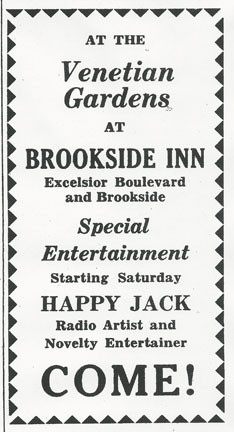Hollywood Inn – SLP
6001 Excelsior Blvd.
St. Louis Park
In addition to the Hollywood Inn in Mendota, there was briefly a Hollywood Inn in St Louis Park, a first-ring suburb just west of Minneapolis.
It was located at 6001 Excelsior Blvd., in a building that would become most memorable as Brookside Drug, built in 1915. That building, still there, is on the Southwest corner of Excelsior Blvd. and Brookside Ave.
HOLLYWOOD INN
In 1926 Harry J. Luscher applied for a permit to operate the Hollywood Inn. It was during prohibition, of course, so the establishment was a restaurant and soft drink parlor. (This is not to be confused with the more notorious Hollywood Inn in Mendota.)
In July 1926 the Hollywood Inn offered a “7 Course Table de Hote dinner, fresh fish daily, Dinner served all day Sundays. Music. Harry formerly of Bergsings Cafe.
On May 18, 1927, the Brookside Brotherhood of the Brookside M.E. Church protested the granting of a license for dancing, presumably in vain.
In 1928 Mr. Arthur M. Bredeson received his annual permit to run his cafe in March.
In March 1928 there was a notice that the Hollywood Inn was for lease, and the next month an ad showed that it was under new management.
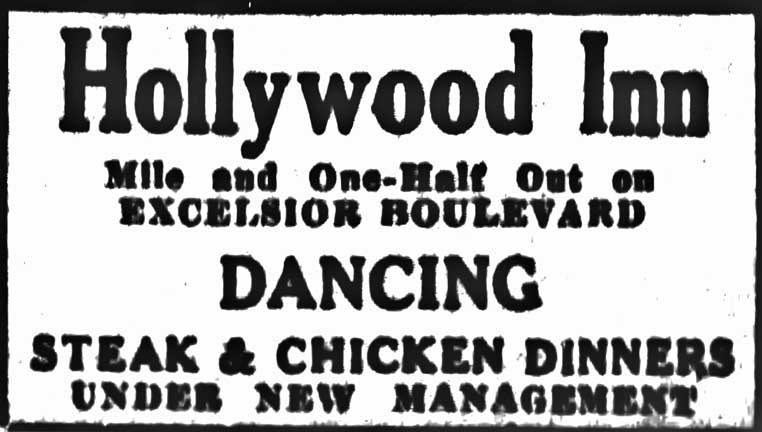
April 13, 1928
In June 1928 there was a petition to the Village Council to allow dancing, although by the looks of things (above), the folks were already doing so.
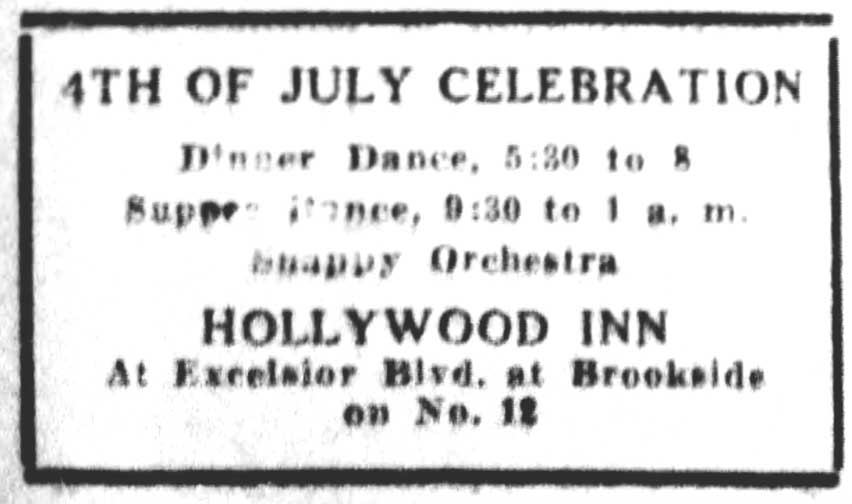
July 1928: “Snappy Orchestra”
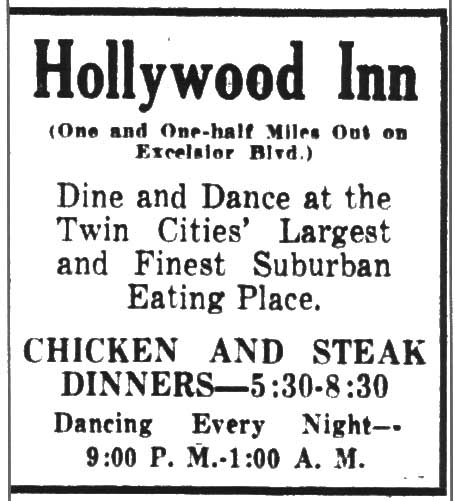
July 27, 1928
Now, I grew up in this neighborhood, and that building was NOT very big. So if this was the “largest and finest suburban eating place,” there was either a lot of hyperbole in the publicity department, or they hadn’t been across the street to El Patio. But swell.
Hollywood Inn ads seemed to stop in July 1928.
In March 1929 Mr. C.H. Kavalaris wanted to open a restaurant at the site of the Hollywood Inn. (An entry for the Hollywood Inn on a building permit for the El Patio address across the street dated March 28, 1929 indicates that the establishment known as the Hollywood Inn was a barbeque place, and the owner was listed as Ed Nolan.)
In 1931 L.M. Duff requested a permit to operate a restaurant. So did Elliott Anderson, who wanted to serve lunches, pop, and milk.
COZY CORNER
In March 1933 a Mr. William F. Zahn requested a license for a restaurant and beer parlor, making the Cozy Corner one of many, many beer parlors that were unleashed at the end of Prohibition.
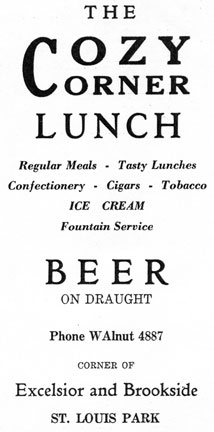
BROOKSIDE INN
In March 1934, henchmen for Baby Face Nelson mowed down local resident Theodore Kidder with machine guns at the corner of Excelsior and Brookside. Bullet holes were embedded in the stucco and were evident for many years. We know from the murder coverage that the place was called the Brookside Inn restaurant/cafe and confectionery, C. Wesley Smith, proprietor. Mr. Smith had obtained a license to expand for music and dancing.
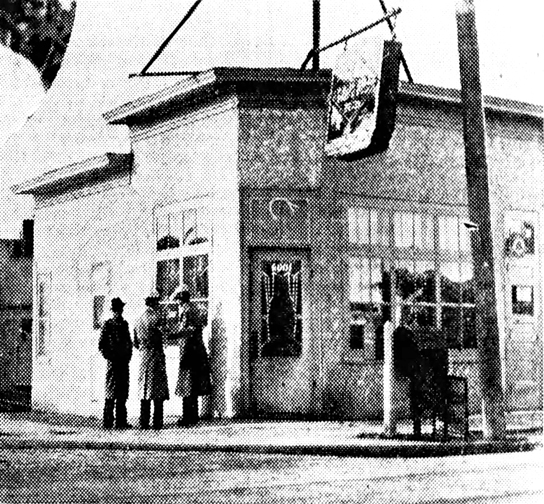
Brookside Inn, March 1934, after Kidder shooting
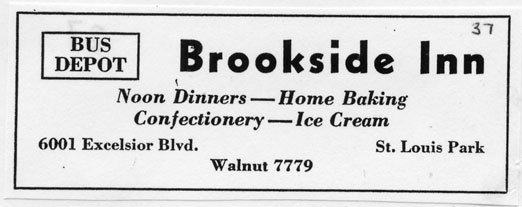
VENETIAN POOL
In the 1934 Directory the building was also advertised as the Venetian Pool, “The Beauty Spot of Excelsior Blvd.” Advertising language (“Marvelously Prepared Food, Refreshing Drinks”) was the same for both, leading us to believe that the inside was the Brookside Inn and the famous outside beer garden in the back (along Brookside Ave.) was the Venetian Pool. Beer had just become legal again, and this popular Beer Garden had tables with umbrellas in back when the weather was nice, and colorful lights strung for the ceiling. This setup particularly scandalized the neighborhood, since now Little Johnny could actually SEE people drinking beer, instead of just imagining what they were doing inside El Patio across the street.
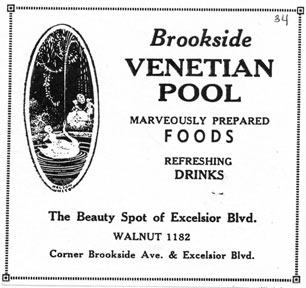
The new liquor ordinance prohibited minors to be in beerhalls, but parents protested that their children could no longer work there, so each parent had to individually request permission for his child to work. On May 2, 1934, Mr. P.K. Anderson received permission from the Village Council for his daughter Evelyn to work at the restaurant.
VENETIAN GARDENS
The ad below from the Hennepin County Review is date June 20, 1935. The place may have changed owners soon after; on November 25, 1935, Olav Vik and George Hanson applied for a beer license for their restaurant but were (at least initially) denied. Vik received approval on February 3, 1936.
